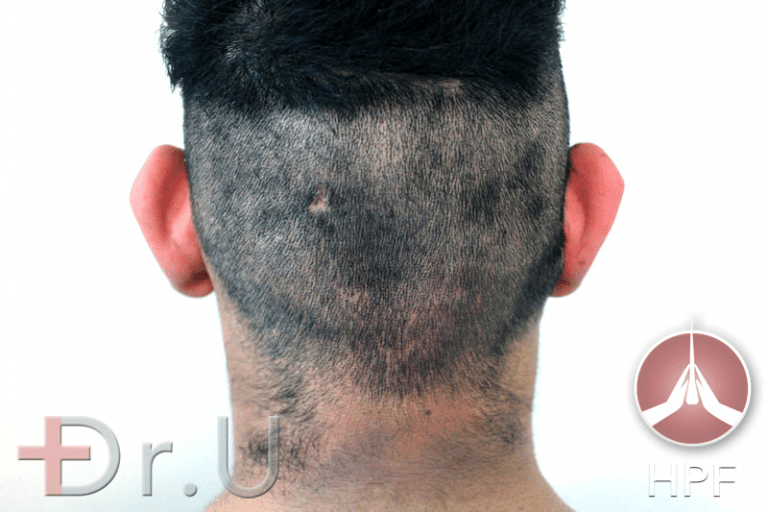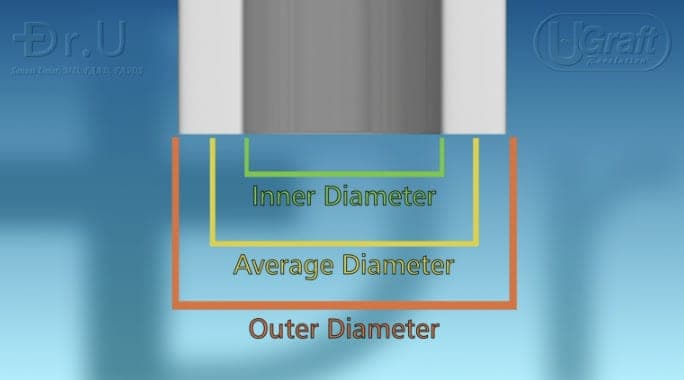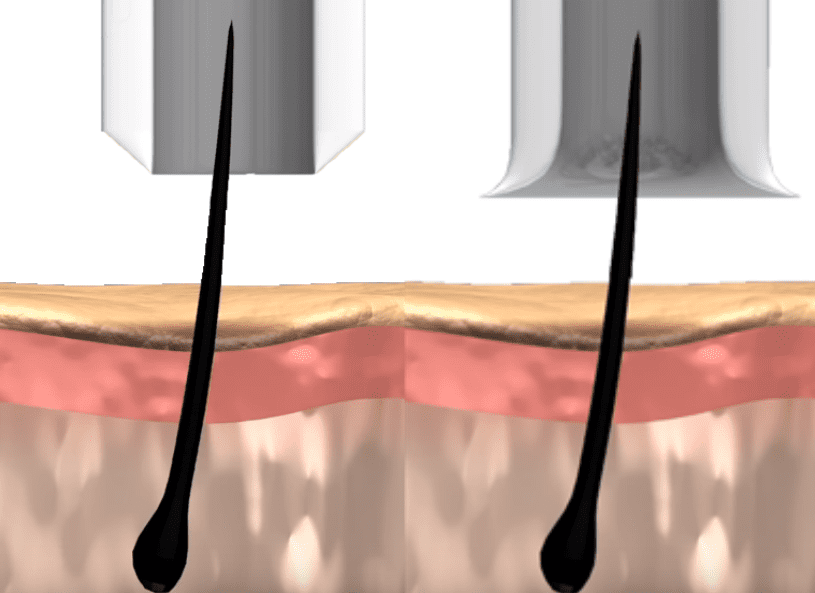Hair restoration surgery is essentially centered around the goal of transferring hair follicles from one area to another. As simple as this concept may seem, there is still the potential for many types of hair transplant problems to occur. So why is this the case? The answer is that the actual extraction process not only involves removing the follicles from their surroundings but also working to ensure that they will survive and thrive in their new location. In reality, there are many not-so-obvious variables which can stand in the way of graft survival and growth. Hair transplant problems also include permanent and noticeable scarring left on the skin following the extraction phase.
Beyond just transplanting follicles, hair restoration surgery is ultimately about turning a patient’s visions, expectations and ideals into an actual reality. This overall endeavor requires highly effective forms of problem-solving to avoid undesirable results like disappointing growth and highly visible scarring. Although many different types of thought processes which can be engaged to find new solutions, here at the Dr.U Hair and Skin Clinics, we prioritize a way of finding new answers, which is known as first principles thinking. This approach is what has enabled us to develop new paradigms and innovations for solving the most pressing hair transplant problems and ensuring the most optimal outcomes possible for even the most difficult or seemingly impossible patient cases.
What Is First Principles Thinking and Why Does It Matter?
A first principle is defined as a “basic, foundational, self-evident proposition or assumption that cannot be deduced from any other proposition or assumption,” as explained by Wikipedia.
The basic concept of first principles thinking stems from Aristotle’s philosophical work which placed great emphasis on reasoning from the first basis from which a thing is known.
Once a set of fundamental truths has been identified, from ground zero, as a starting premise for reasoning, each conclusion made should form a lucid, pathway to the end result. Real life variables should be taken into account, not just the theoretical ones.
The importance of first principles thinking is that it enables more reliable guidance when navigating the unique nature of specific situations. By contrast, general reasoning and basic solutions endorsed by others can often entail the risk of providing overly simplistic answers and fall short of solving the problem at hand.
Dr.U Solves Major Hair Transplant Problems Using First Principles Thought Processes
Dr.U has been able to help patients with many types of challenges (as well as hair transplant problems) to achieve their vision by bringing forth new possibilities that were previously thought to be impossible.
These achievements resulted from Dr. U’s own serendipitous journey into hair transplantation due to his own plight with hair loss and disappointing surgical outcomes due to egregious hair transplant problems. This personal experience caused him to gain a keen, up-close view of the issues that prevent patients from attaining the results they hoped to achieve. And through this perspective, he was able to attain a more unique set of fundamental self-evident truths. This provided the basis for the ongoing inquiries which led to pivotal advancements that overcome the limitations of the status quo.
Here are a few examples where Dr.U’s use of first principles thinking led to new possibilities for improving patient results and preventing typical hair transplant problems.
Dr.U’s Rethinks the Safe Donor Area With His FUE Shave Test To Help Qualified Patients Benefit From New Sources of Permanent Hair Transplant Grafts.
Although conventional hair transplantation relies on a construct known as the Safe Donor Area (SDA) to locate permanent donor grafts, Dr.U discovered that the text-book confines of this region are not necessarily valid for each and every patient. On a shaved scalp surface, it becomes clear where there are regions marked by permanent, healthy growth versus miniaturizing follicles. These areas do not always conform to the classically defined borders of the SDA. And furthermore, other regions of permanent grafts also exist outside this region.
Dr.U developed the FUE Shave Test assessment as a tool for screening patients on an individual basis, rather than applying general rules which may or may not apply. With this resource, it then becomes possible for patients to benefit from additional supplies of donor grafts, such as nape hair. Alternately, it also prevents the use of inappropriate graft choices for individuals who do not qualify for their usage.

Dr.U Solves Hair Transplant Problems By Lowering Hair Transplant Graft Transection With His Intuitive FUE Paradigm
In FUE (Follicular Unit Extraction), transection occurs when hair transplant grafts are damaged by surgical punches during the extraction phase. Consequently, less coverage is possible for the patient. The main cause of these injuries has been attributed to structural incompatibilities between cylinder shaped punches and anomalies like hair curvatures and sharp growth angles.
Dr. U has been able to challenge this dictate as a result of his observations that originated from his extensive experience across diverse patients. He discovered that skin thickness is a more accurate contributor to graft transection, compared to hair shaft morphology.
With this insight, Dr.U developed his Intuitive FUE paradigm and built his Dr.UGraft ™ hair transplant extraction technology based on this ideology. Using this FUE punch system, providers can now customize settings in order to achieve low to zero transection rates for patients as well as different body regions of any skin thickness level.
All ethnicities, as well as individuals of African origin, who have very thick skin now have a reliable means for extracting viable donor grafts, instead of having to take their chances on a general hair restoration procedure which may or may not produce the growth they hoped for.
Furthermore, the capability of accounting for skin thickness also allows grafts from any part of the body to be safely harvested for more specialized hair choices as well as a greatly expanded donor supply.
How First Principles Thinking Helps Hair Transplant Patients Make Better Decisions For Their Surgeries
First principles thought processes not only matters for improving hair transplant methodologies but also helps patients themselves make better choices for their procedure.
As Dr.U learned from the mistakes of his own hair loss, choosing the right provider is critical for avoiding regretful outcomes and hair transplant problems. Instead of making choices based on claims, patients should rely on their own observations, questions, and conclusions.
First and foremost, the right surgeon should be able to demonstrate a wide range of successful outcomes in the form of before and after photos and videos. Patients should do their best to pay close attention to cases that are most similar to their own.
Secondly, it is also important that providers use tools which increase the probability of safe graft extractions, low transection rates as well as the most optimal forms of wound healing on the donor skin surface.
Hair transplant procedures usually involve hundreds to thousands of grafts, the ability to achieve consistently high graft quality is a significant priority to consider. Manual attempts to be as precise as possible are not feasible across large donor supplies since human error and fatigue will be likely factors that affect performance.
Using technology equipped with the right features is a more reliable way to protect thousands of grafts from injuries while leaving the best donor skin healing outcomes possible.
If you are in the process of choosing a hair transplant provider, learn about the different types of FUE punch devices available and how their features contribute to the outcomes that matter most to you. You should also gain an understanding of how they prevent hair transplant problems.
Patients should avoid the practice of simply memorizing facts and associations. Instead, it is far more valuable to practice skills in first principles thinking by and understanding particular aspects of how a surgeon’s methodology works and whether or not it is effective for the end vision and growth yield.
Two attributes for patients to pay close attention to when they are learning about FUE devices are punch sizes as well as punch types.


With FUE punch sizes of cylinder-shaped devices, bigger diameters will gather more bulk around the graft which helps to enhance its survivability. On the flipside, however, they will also create bigger donor wound sizes.
To resolve this paradox, Dr.U designed his intelligent punch to have a bazooka shape and not a regular cylinder. This novel and original configuration are designed with an enlarged roomed interior. The instrument is designed to gather more surrounding bulk without increasing the diameter of the punch, overcoming hair transplant problems such as poor graft quality and noticeable scarring after the donor wounds heal.
When trying to understand the many different types of FUE punches available, it will seem like there too many devices and features to consider. The best way to gain a practical grasp of this information is by learning how they are classified. This framework will create more meaningful associations. It then becomes much easier to learn the basic features of different punches.
Dr.U’s Tips For Patients On Making The Right Hair Transplant Choices
Here is a summary of tips and advice to keep in mind when deciding on the best hair restoration provider.
- Ask your own questions and be proactive about finding their answers.
- Also, learn about the factors that contribute to low growth yield as well as more visible donor wounds.
- Find out whether or not a device is equipped to prevent these issues from occurring. It will then make sense which technology is best suited to achieve the outcomes you want.
- Look at examples of real-life patient outcomes that resulted from a combination of the surgeon’s own skill and the hair transplant technology they used.
First Principles Thinking For New And Better Answers – Beyond Hair Transplantation
In our modern era, Elon Musk advocates the application of first principles thought processes to produce better, relevant and more exceptional forms of innovation and reinvent the future. He gives the advice, “Don’t just follow the trend. You may have heard me say that it’s good to think in terms of the physics approach of first principles, which is, rather than reasoning by analogy, you boil things down to the most fundamental truths you can imagine and you reason up from here.”
Dr.U recommends studying a particular situation through your own observations, paying attention to the questions that arise and proactively seeking the answers to them yourself.
Innovation Strategies and Models – Distilling Information to Fundamental Truths That Are Accurate, Relevant and Value-Driven
With regards to first principles thinking Dr.U recommends that when working to solve hair transplant problems, or any other challenge in life, it is absolutely essential to study a situation through your own observations and pay attention to your own questions.
As noted earlier, we must learn to see a situation for what it is by stripping away surface interpretations made by other people. This information is likely to be overly general or simplistic, and at worst, mere hype. In all probability, they will not aptly fit the exact nature of the challenge you are trying to solve.
When you start to create other inferences and conclusions in your reasoning process, they should form a lucid and logical step-by-step pathway to your end result, taking into account the real-life variables involved, not just the theoretical ones. With this framework, you then work to recognize what is valid for a particular situation and what is not.
Not only should you work towards arriving at good solutions, but also end results that carry value.
Entrepreneur and business consultant, Sam Ovens explains this quite well when he observed that many of us become “obsessed with complexity” and feed this preoccupation with “advanced strategies and tactics” while completely missing the point. He gives the example of providing the best silverware for a party and overcooking the main meal. In the end, what is most important to the guests is how the food tastes and not the cutlery.
Or in the example of website development, small details like the color of a button can become the source of heated debates. But the main priority is really the sales offer and how compelling it is to website visitors. In all likelihood, their decisions will not be based on button colors.
When it comes to hair transplant extraction devices, there are many advanced innovations available in today’s market. As it is human nature to become enamored by seeming complexity and sophistication, these systems often garner much attention as technical marvels. With this perspective, many people forget to evaluate these devices in terms of how well they can achieve the main hair transplant goals. This includes attaining an ample supply of healthy permanent donor in order to produce coverage while leaving behind minimal scarring that others do not notice. Another consideration is how specific technologies work to solve the most common hair transplant problems.
Whether we are speaking of business, or specific fields like hair transplantation, engaging in first principles thinking also involves another key focus in addition to determining self-evident truths. And that is to make sure to stay on the path of remembering the ultimate value you are looking to attain in the long run. So assigning priorities to your conclusions is a must.
In our early years, we have been taught to learn by listening, reading, memorizing and accepting information presented to us. But throughout our later years, as we have to become skilled at making good decisions in unique situations, it becomes far more important to study situations in life by asking your questions and determining what amounts to surface facts versus your own truths. First principles thinking is essentially about thinking for yourself, instead of relying on the comfort zone offered by rules, formulas, generalizations and surface facts provided by others.
Although you are embarking on your own path, it leads to better thinking and better and more fulfilling long term outcomes.
If you are interested in speaking to Dr.U further about these topics, submit your question or comment by clicking the Ask Dr.U button below:
[dt_button link=”/hair-surgery/ask-dr-umar/” target_blank=”false” button_alignment=”center” animation=”fadeIn” size=”big” style=”default” bg_color_style=”default” bg_hover_color_style=”default” text_color_style=”default” text_hover_color_style=”default” icon=”fa fa-chevron-circle-right” icon_align=”left”]ASK DR. U[/dt_button]
Frequently Asked Questions – Latest Innovation In Hair Transplant
How can I know if my hair transplant procedure with Dr.U’s Intuitive FUE technology will produce the lowest transection rates possible as the most advanced hair transplant technique?
At the start of your surgery, the operator will apply standard performance settings to see how the punch will behave with your particular skin thickness. He or she will look for indications that the punch is either having difficulty penetrating the skin or producing an impact that is too powerful for your grafts to be extracted safely. The parameter of the system will then be adjusted, as discussed above. The practitioner can also then quantify the rates of transection within small sample quantities of donor grafts. If needed, the settings can be further adjusted to reach the most minimal occurrence levels possible which overcomes significant hair transplant problems. These figures can also be discussed following your procedure if you are interested in finding out the percentage of graft transection which may have occurred.
Do all of Dr.U’s male hair transplant patients undergo his FUE Shave Test? Is this absolutely necessary to proceed with a hair restoration surgery?
Shaving the head is a normal patient protocol prior to conducting FUE hair transplantation surgery. Basically, all patients will end up having their scalp shaved unless they opt for a non-shaved FUE. Shorter hair lengths allow the surgeon to ascertain the hair angle. They also allow the hair to fit inside the lumen of the punch so that it can better encompass the graft.
The actual assessment of the Shave Test will involve the practitioner looking for signs of diminished hair densities or calibers. It is then possible for them to know if nape hair can be used. They will also be able to know of body hair is needed for future surgeries. Knowing this information ahead of time prevents many types of hair transplant problems.
While these evaluations can take place on the actual day of the procedure, it is best to conduct an FUE Shave Test analysis well in advance of this date in order for the surgeon to devise more effective long term planning strategies.
Is Dr.U’s Intuitive FUE device considered a hybrid punch? If so, is it a rotary or non-rotary instrument?
Yes, Dr.U’s Intuitive FUE instrument, also known as the intelligent punch, has a hybrid design and a rotary configuration which helps solve many common hair transplant problems. This means that it combines sharp and dull attributes into a single device. The graft stays protected from transections due to human errors in punch alignment. With a hybrid design, sharp edge directs away from the follicular unit during the excision process. At the same time, it stays facing a curved, dull surface. Non-rotary punches are best suited for unshaved FUE procedures. Since the device does not rotate, hair will not get tangled with the instrument.


